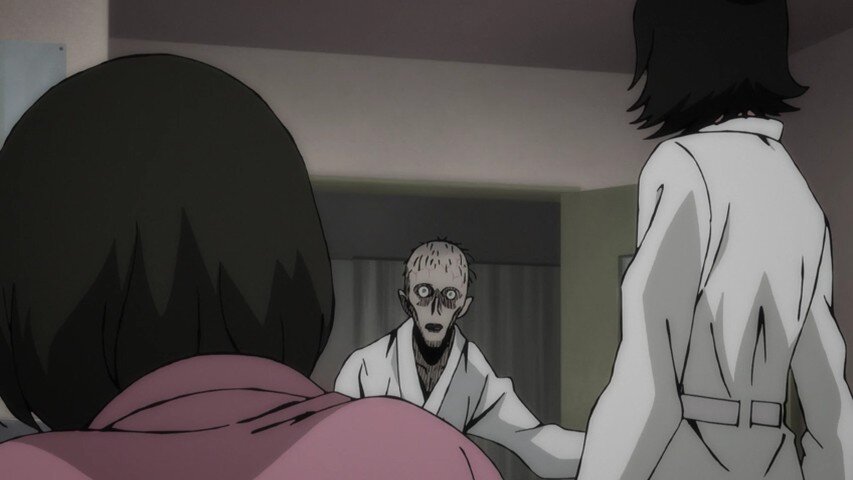The Appeal of Junji Ito
In the world of anime and manga, anyone who loves horror will know Junji Ito, the author renowned for his terrifying manga. In 2018, 24 of Ito’s stories were adapted into a 12-episode anime, titled ‘Junji Ito Collection.’ The anime adaptation was highly anticipated due to the popularity of his manga and people’s eagerness to finally see these stories brought to life. Ito is particularly famous for his abstract horror and how he makes social commentary in the distinct ways that he terrifies people. However, the majority of audiences were disappointed with the anime adaptation, despite the great and far-reaching appeal of his manga.
Many critics have argued that Ito’s works stand out against others because of its sheer terror and themes that leave audiences pondering about them for ages. In Ito’s fictional universe, his characters are victims of unnatural circumstances for no reason or unfairly punished by the unknown natural order. This in part reflects real life society and how anyone can become a victim, whether they are deserving or not. Themes include jealousy, body horror, ordinary characters who start acting irrationally, society’s breakdown, the inevitable demise of human beings, and more, depicted through a realistic and simple design.
One reason why Ito’s works are so popular is because of their visual aesthetic and appeal that they offer. Every single manga, no matter how long or short, features terrifying visuals and downright gory panels. Each manga author has their own art style, and Ito’s is very distinct. Like all manga, Ito’s panels are almost entirely in black and white, with colour used only for cover pages. He used this monochrome effect to alter the mood and tone of a story. With the drawings in black and white, Ito was able to create the eeriest of images and also add an air of mystery and suspense to the picture. In most manga, authors add life to their characters with shading to show their characters’ expressions, for example a girl may be blushing when talking to someone she likes. In Ito’s manga, characters have white skin, making them look like creatures devoid of life. Inhumanity is one of Ito’s central themes, so this trait helped to add to the characterization in each story. Eyes were also illustrated with a lot of detail, enabling Ito to depict all kinds of negative emotions through them.
The narrative themes in Ito’s works, both in the manga and anime, will leave people wondering about the plot for days. Many of his works are simply unnerving as his imagination and creativity go wild. One common theme is creatures being beyond human. In most cases, human beings lose themselves and their sanity and morph into terrifying creatures. This also signifies a loss of humanity, either due to paranoia or supernatural elements, and reflects symbolism in real life as people can easily lose themselves. In the process of losing their humanity, the characters panic and have both an internal and external struggle. As a result, it is easier for readers to empathize with characters, as they might relate or see themselves in the characters. Human beings can be scary too. Furthermore, many of Ito’s works are simply nonsensical and bizarre, implying how life can sometimes be completely incomprehensible too.
Ito’s drawings were so scary and chilling that they could resonate with readers for a long time. People were excited to see the extent of the drawings as animations. There is no doubt that animations had the potential to be even more terrifying than the manga. The anime did well in some aspects. Many of the episodes had an eerie tone and unnerving scenes. In ‘Greased’, the oil and grotesqueness of the main character developing a million pimples make it difficult to stomach food after. This is also not the anime for people who have trypophobia or who are easily spooked by creepy creatures. However, many people who watched the anime claimed that it had fallen short of everyone’s expectations. The animation did not make room for enough intricate detail to make the visuals truly terrifying and grotesque, as well as memorable. It was not able to resonate as much as the manga’s visuals, leading people to claim that it does not do Ito’s work justice.
Ultimately, because most anime is based on manga, viewers cannot help but compare the anime adaptation to its original source. When the manga is so highly acclaimed, people tend to have high expectations for the anime. It is important for viewers to remember that the page and screen are different mediums. While the manga allows for more clarity with the space for more text and intricate details, the anime can change the mood with movement and music. In Junji Ito’s case, since the story depends so much on visual details to be scary, it was best depicted as a manga.
